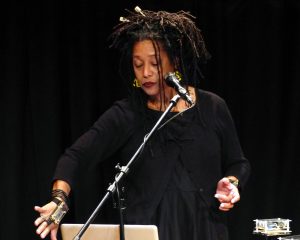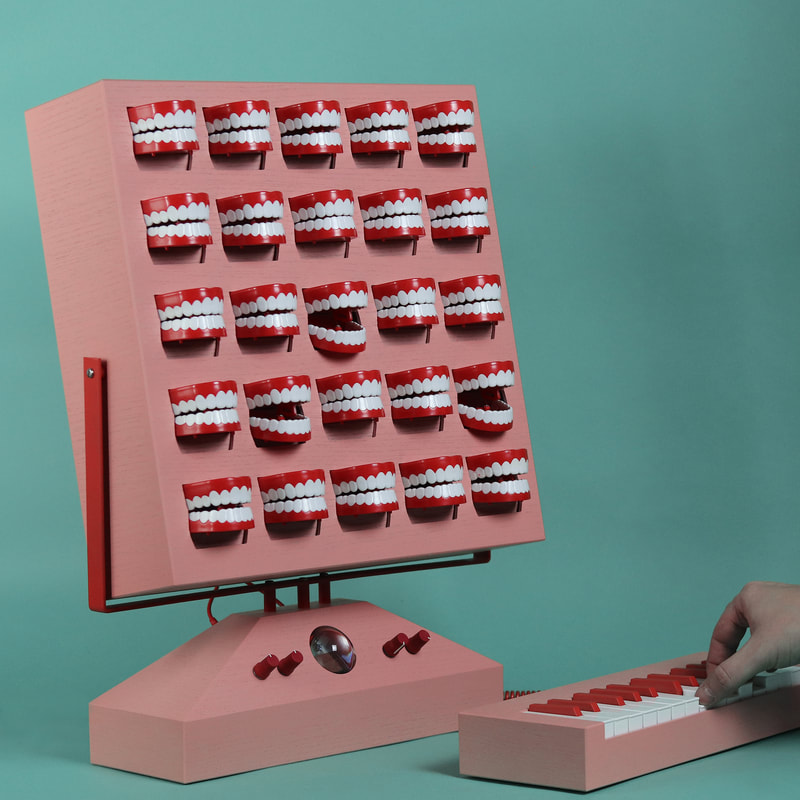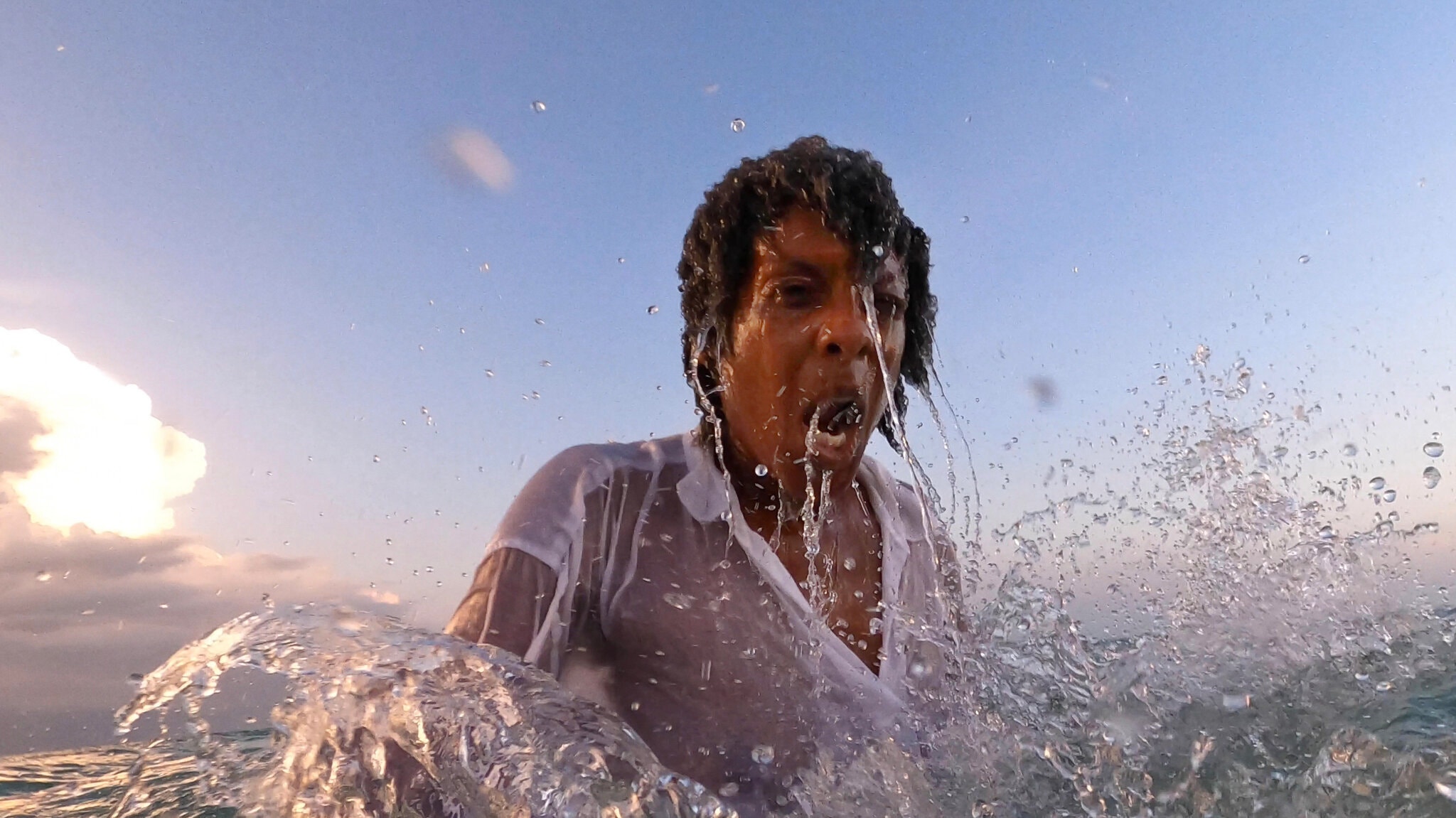Pamela Z Manipulates Voices in a Virtual Tour of Times Square
“Times3,” a collaboration between Pamela Z (photographed here in San Francisco) and the theater artist Geoff Sobelle, is part of a pandemic edition of the Prototype festival of music theater.Credit…Andres Gonzalez for The New York Times
By Seth Colter Walls
January 7, 2021
The composer, vocalist and multimedia artist Pamela Z was supposed to have a good 2020. She started the year in Italy, as a recipient of the prestigious Rome Prize, working on a new performance piece that was to have its debut in June at the Museum of Modern Art in New York
The piece, “Simultaneous,” was to capitalize on the strengths Ms. Z, 64, has developed over a long and celebrated career. It would deploy her classically trained voice, her subtle (and sometimes humorous) layers of projected images and her skills as a live manipulator of media — especially her theatrical use of gesture controllers, wireless devices that let her physical movements affect sound.
“I consider my instrument really to be the combination of my voice and the electronics,” she said in a phone interview from her home in San Francisco. “As a performer, I’m not just singing and then putting some effects on that. And I’m not just making electronic sounds. I’m actually simultaneously singing and speaking, and, in real time, sampling and processing and treating my voice to create these layers of sound that I consider to be a composition.”
 Ms. Z performing in San Francisco in 2015.Credit…Charles Smith
Ms. Z performing in San Francisco in 2015.Credit…Charles Smith
When the pandemic hit, it cut her Rome residency short and indefinitely delayed her MoMA premiere. That was a blow not just for Ms. Z, but also for fans of experimental art in New York. While her music has lately been heard in the city as part of the Resonant Bodies Festival and the flutist Claire Chase’s ambitious “Density 2036” project, her more conceptual work as an installation artist and multimedia creator is not shown often enough here.
The Prototype festival this month will offer something of a corrective, presenting “Times3,” a streaming soundscape collaboration between Ms. Z and the theater artist Geoff Sobelle. It comes as part of a pandemic overhaul to this annual festival of new opera and wide-ranging music theater; five of the six presentations in this year’s edition, which runs Friday to Jan. 16, will exist only online. (“Times3” is free; attendees need only register online beforehand, starting Jan. 9, to receive a link and password for the audio.)
“Times3” gives listeners something of a crash course in Ms. Z’s ever-evolving practice. “I haven’t jettisoned anything, I’m just adding things,” she said. “At one time it would have been accurate to call myself a musician. Now it’s only a fragment of what my work encompasses.”
Ms. Z was still finishing up the final version of “Times3,” alternately titled “Times x Times x Times,” in the days ahead of its premiere. The half-hour or so piece, a meditation on the past, present and future of Times Square, is built from interviews that Mr. Sobelle conducted with scholars and theorists who hold vivid perspectives on the neighborhood. The musical form it takes is Ms. Z’s responsibility.
“I tend to work with everything from full sentences to short phrases to just individual words, even syllables and phonemes,” Ms. Z said, describing her editing process using the audio program Pro Tools. “And I’m just capturing all those little pieces and naming them so I can use them as building blocks, to structure the piece.”
It’s a process familiar to Ms. Z, since some of her earlier work — including 2019’s “Louder Warmer Denser,” for Ms. Chase — has involved post-produced fragments of interviews. And the way Ms. Z layers her own voice, during live performances, has also prepared the composer for some of the challenges of “Times3.”
You can hear that facility for editing in her other recent projects. A concert livestreamed from her home studio and presented by Mills College — featuring, in her description, “voice, real-time electronic processing, sampled sounds, wireless gesture controllers and interactive videos” — is technically startling and fluidly soulful; at one point, Ms. Z uses looping to build her own backup choir.
The performance includes some pieces heard on her album “A Delay Is Better,” released on the Starkland label in 2004; that album also gives an effective overview of her work. A track like “Badagada” demonstrates her love of traditional operatic singing as well as of Minimalism and live electronic manipulation, while “Pop Titles ‘You’” works as a clever found-poem in sound. “Geekspeak,” which lets speakers other than Ms. Z attempt to define the essence of geekery, approaches interviewing and sound editing as forms of storytelling and art-making.
Born in Buffalo, N.Y., and raised in Colorado, Ms. Z studied vocal music and education. Initially, she pursued more traditional voice-and-guitar singer-songwriter work — with “a bit of classical music bizarrely laced in,” she said in an email — before committing to a more experimental approach. In the 1980s, she moved to San Francisco, where she still lives, creating solo performances as well as fulfilling an increasing number of commissions — including chamber music, dance scores and dramatic pieces — from groups like the Bang on a Can All-Stars, the Orchestra of St. Luke’s, the Kronos Quartet and Eighth Blackbird.
Her “Times3” partner, Mr. Sobelle, worked with Jecca Barry, a director of the Prototype festival, on past productions. The festival’s organizers recommended that he and Ms. Z do a piece about Times Square. Mr. Sobelle was keen to partner with her; he said that he had been aware of her work “a little bit, from a friend who suggested that I take a look, at another moment, just to see a wild virtuoso.”
And when Ms. Z watched the eight-millimeter short film that had opened Mr. Sobelle’s 2005 stage work “All Wear Bowlers” — “a beautiful, poetic piece that was styled after silent films,” she said — she was sold on the collaboration.
After discussions with Prototype, the two artists decided not to make listeners venture to Times Square to access the audio. Instead, by using interviews with people familiar with the area, they decided to create what the poet Lawrence Ferlinghetti might have called a Times Square of the mind.
“There’s a landscape architect; there’s somebody who’s a theater stage manager, who’s stage-managed a lot of shows on Broadway,” Ms. Z said. “We interviewed some historians, people who knew about the Indigenous people who lived on that land. And we interviewed a person who has all kinds of theories about what would happen if there were no longer humans — and what changes would occur.”
Mr. Sobelle conducted the interviews, then furnished Ms. Z with the raw sound files, as well as notes about ways the transcripts might be layered to produce dramatic resonance.
In this way, “Times3” is closely related to the most current version of “Simultaneous,” broadcast last month by Deutschland Radio. In that 44-minute piece, the thematic focus is on the contemporary culture of multitasking, and Ms. Z’s jaundiced view of it.
For source material, she interviewed and recorded her fellow Rome Prize recipients on the topic, preparing for the live performances at MoMA. Instead of waiting for those appearances to be rescheduled, she created a purely audio iteration for the German radio station.
At the start of the radio version, fans of Ms. Z might find themselves impatient for her voice. But the narrative rhythm of her editing has humor, which makes the build toward her full bel canto-infused technique worth the wait. Her first noticeable vocal contributions come in scintillating, refracted shards around the 22nd minute. From there, her vocalizations grow more prominent. (Make sure to catch a lovely song in the second half.)
“Times3” audiences can expect a similar structure. “You’ll hear my voice because I have some actual singing parts,” she said. “Also because Geoff insisted on interviewing me.”
Mr. Sobelle said he was impressed with what Ms. Z was “able to cobble together out of strange pieces of material.” Though he was disinclined to offer audiences the equivalent of liner notes for “Times3,” or anything that would suggest an experimental work needs special explanation, he did say that “it’s not like a piece of journalism or like a historical document.”
“Even though we’re speaking to academics and journalists and architects and city planners and people like that,” he added, “she’s looking for musicality. It’s very much an art piece.”
A version of this article appears in print on Jan. 8, 2021, Section C, Page 1 of the New York edition with the headline: ‘Wild Virtuoso,’ Ever Expanding.





